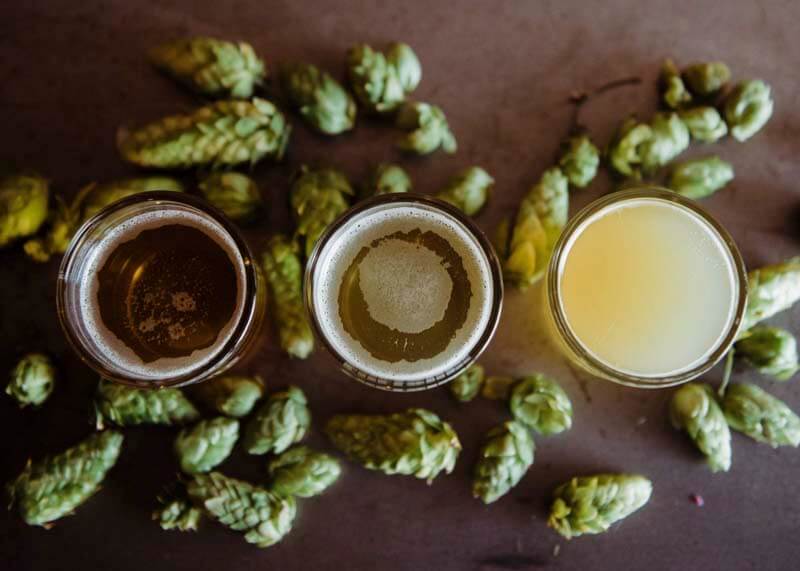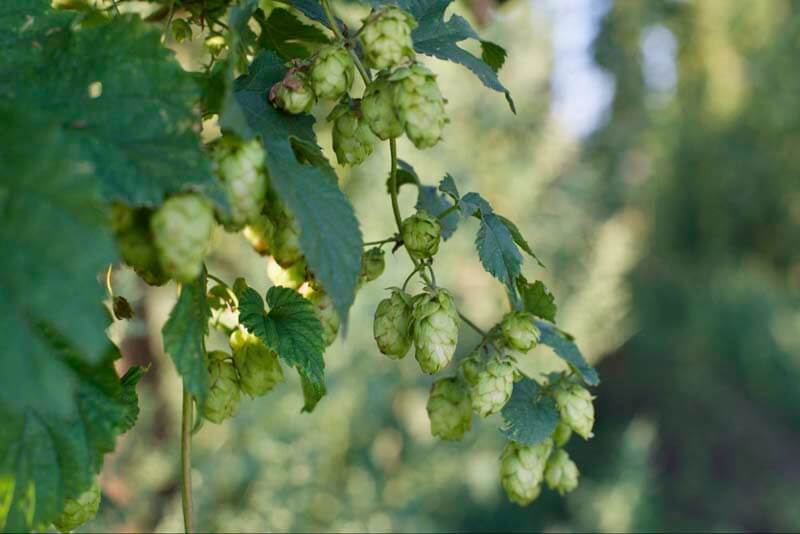The Complete Guide to Noble Hops

September 2, 2022

We recently put together a guide for all of the hops grown in America and another for those found in the Southern Hemisphere. But while hops in the United States, Australia, New Zealand, and South Africa are fairly new, we can’t forget about noble hops, classic European varieties that have been cultivated for hundreds of years.
Found mostly in Germany and the Czech Republic, the four noble hop varieties—Hallertauer Mittelfrüher, Tettnanger (sometimes referred to as Tettnang), Spalt (sometimes called Spalter), and Saaz—dominated hop production around the world for many years.
In fact, Germany held the record for the largest amount of hop acreage in the world, only overtaken by the United States in 2015, according to The Hop Growers of America 2021 Statistical Report. In 2021, the U.S. harvested the largest hop acreage at a little over 61k acres, followed by Germany at 51k, and the Czech Republic at 12.2k.
Even though “sexier” New World varieties such as Citra, Cascade, and even Nectaron have become extremely popular in the last decade or so, it’s important to remember that Old World noble hops are kind of considered hop royalty for a reason.
These are hops with history. Long heralded for their quality and consistency, noble hops can be found in some of the most iconic, classic beers.
As pillars of the beer industry, noble hops deserve a deeper dive. Let’s look at what makes noble hops unique and the characteristics of the four different varieties.
What We’ll Cover in This Piece:
Why Are Noble Hops Unique?
Here are three reasons why noble hops have long been some of the most-respected and well-established hop varieties from around the world:
Terrific Terroir
Consider noble hops in the same way you would prized wine grapes. Just like grapes have certain terroir, or unique characteristics based on where they’re grown, noble hops pick up distinct traits based on the environment around them.
For instance, Tettnanger hops originate from Tettnang, Germany, imparting distinctive herbal and spicy notes.
And Saaz hops, which come from the Czech city Žatec (known in German as Saaz), are known for being earthy, herbal, grassy, floral, and spicy.
And just like Champagne is only considered “real” if it comes from the eponymous region in France, noble hop varieties are only deemed “true” if they originate from a specific place.
So while you can actually find Tettnanger hops also grown in the Pacific Northwest region of the U.S., only Tettnanger hops from the area around Tettnang, Germany, are considered the true noble variety.

Excellent for European Styles
This may be a bit of generalization, but American or Southern Hemisphere hops tend to be juicier or more hop-forward, making them perfect for a variety of IPAs, pale ales, hazies, etc.
On the other hand, noble hops impart a more floral or herbal bitterness (thanks to a lower alpha acid range of 3-5.5 percent) and help give beer a nice clean mouthfeel. This makes noble hops better for classic European beers—German and Czech pilsners, German lagers, and Belgian ales, to name a few.
Heralded as High Quality
Actually only coined as a term in the 1970s or ‘80s, “noble hop” may be a bit of a marketing ploy more than anything, but the phrase does serve a specific purpose.
Giving a distinct air of nobility to this crop of Old World hops, the words ”noble hop” denote hops of exceptional quality.
A Complete Guide to Noble Hop Varieties
We’ve put together a complete list of noble hops along with some essential information to know about each including: description, type, alpha acid range, aroma notes, best beer styles, and possible substitutions.
Editor’s Note: Consider this a cheat sheet. We’re not brewers, so we can’t proclaim this is the most exhaustive guide. For that reason, we’ve sourced all of the information below from a few very reputable hop vendors, merchants, and growers.* All descriptions and alpha acid ranges come courtesy of Yakima Chief Hops (YCH), one of the most respected hop merchants in the business. The aroma notes and best beer styles come from a combination of research from YCH and Yakima Valley Hops. And the substitution suggestions are courtesy of YCH and Beer Maverick.
* To get the best and most up-to-date information on any hop variety, be sure to ask your own vendors, hop merchants, or hop growers.
Hallertauer Mittelfrüher
Description: Despite being grown in regions throughout Germany, Mittelfrüher is commonly referred to as “Hallertauer Mittelfrüher” as it was once the major Hallertau landrace variety. It is a classic German aroma hop associated with Bavarian-style lager beers. It is distinguished by an intense, pleasantly harmonic bitterness. (YCH)
Country of Origin: Germany
Type: Aroma
Alpha Acid Range: 3.5 - 5.5%
Aroma Notes: Noble, earthy, spicy, and herbal
Best Beer Styles: German pilsner, traditional lagers, Belgian ales, European ales
Substitutions: Liberty, German Tradition, Ultra
Tettnanger
Description: A landrace variety originating from the Tettnang region on Lake Constance in Germany, Tettnanger is from the Saaz group. It displays fine, noble characteristics with a slight spiciness. This variety is ideal for dry hopping, too! (YCH)
Country of Origin: Germany
Type: Aroma
Alpha Acid Range: 2.5 - 5.5%
Aroma Notes: Herbal, spicy, pepper, woody, and black tea
Best Beer Styles: Bitter, California blonde ale, red ale, pilsner, lager, American amber ale, winter ale, pale ale, wheat beer, Bavarian hefeweizen, cream ale, American lager
Substitutions: Czech Saaz, Spalter, Santiam, Spalter Select, Saaz, Tettnanger (US)
Spalt (or Spalter)
Description: A landrace variety originating from the Spalt region in Southern Germany, Spalt (or Spalter) is an aroma variety with characteristics similar to German Tettnang (or Tettnanger). It belongs to the Saaz group and displays fine, noble characteristics. (YCH)
Country of Origin: Germany
Type: Aroma
Alpha Acid Range: 2.5 - 5.5%
Aroma Notes: Noble, earthy, spicy, and herbal
Best Beer Styles: German ale, lager, pilsner, bock, kölsch
Substitutions: Saaz, Tettnanger, Santiam, Liberty, Hallertau
Saaz
Description: A Czech Republic landrace variety, Saaz is the most classic “noble” aroma hop with longstanding and strong traditions. It is associated with and defines Czech-style pilsners. (YCH)
Country of Origin: Czech Republic
Type: Aroma
Alpha Acid Range: 2.5 - 4.5%
Aroma Notes: Mild with pleasant earthy, herbal, grassy, floral, spicy, woody
Best Beer Styles: Bohemian-style beer, continental lager, wheat, pilsner
Substitutions: Polish Lublin, US Saaz, US Sterling, Tettnang
Looking for More Guides on Hops Around the World?

What About Southern Hemisphere Hops?
Check out: The Complete Guide to Southern Hemisphere Hops
What About American Hops?
See Why Breweries Like You Are Making The Change
Ollie is the affordable, easy-to-use software to manage your brewery and operations. See why breweries like yours are making the switch.
